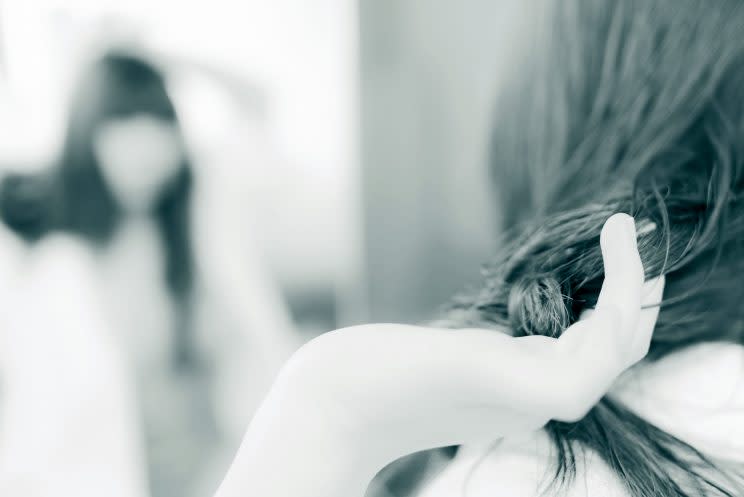Scalp Cooling Caps Help Prevent Chemo-Related Hair Loss, Says Study

There’s promising news for women who are undergoing chemotherapy treatment for breast cancer and are worried about losing their hair.
Research published in the peer-reviewed medical journal JAMA states that scalp cooling therapy can be highly effective in reducing hair loss in women who are receiving taxane or anthracycline chemotherapy regimens.
The study comprised 182 women with Stage I or Stage II breast cancer who planned to have at least four cycles of taxane- or anthracycline-based chemotherapy. The participants who were instructed to use the Orbis Paxman Scalp Cooling System device wore the item on their head for 30 minutes prior to their chemotherapy treatment, during the entire treatment, and for 90 minutes after treatment.
After completing four cycles of chemotherapy, more than 50 percent of the women in the “cooling group” had hair preservation of grade 0 or 1, meaning no wig or scarf was necessary. As for the women who were placed in the “no cooling group,” none of them were spared from chemo-induced hair loss.
“I wasn’t surprised [by these results] because there are a lot of studies from Europe and other countries that showed significant hair retention rates,” Julie Rani Nangia, MD, lead study author and assistant professor at the Lester and Sue Smith Breast Center within the NCI-designated Dan L. Duncan Comprehensive Cancer Center at Baylor College of Medicine, tells Yahoo Beauty.
However, this current research is the first randomized study in the world that observed the effects of scalp cooling devices with patients who received various types of chemotherapy for breast cancer treatment. The previous investigations only examined “one specific type of chemo, like the class taxane, which has a higher rate of hair retention,” states Nangia.
She further explains that the machine “is like a little refrigeration unit that circulates coolant to the cap.” The device used in this study has a two-cap system: The inner silicon cap circulates the chilled fluid, while the outer neoprene cap insulates the scalp, which fits firmly to the patient’s head with a chin strap. The cap is connected to a machine, which can be briefly detached from the patient to allow for greater mobility during sessions.
“Chemotherapy treatment works by attacking rapidly dividing cells, but in doing this, it also targets rapidly dividing hair cells, 90 percent of which are in the growth stage, resulting in hair loss,” states Nangia. “With scalp cooling, we are lowering the temperature of the scalp, thereby constricting the blood vessels and reducing the flow of blood to the hair follicles, which will help reduce hair loss by limiting the amount of chemo drugs reaching the follicles.”
She points out that patients with thicker, coarser hair, like African-American women, may have success if they increase the cooling time from 30 to 45 minutes. And while the volunteers were not instructed to cut their hair before treatment — “It’s more about hair type than hair length” — African-American women were encouraged to undo their braids. “The one person who didn’t, the braids just fell out because it wasn’t penetrating right.”
Nangia is hoping that additional research will be conducted on these mechanisms in the near future. “I would love to see U.S. registry trials so that we can allow all patients with solid tumors — for example, lung cancer, colon cancer, and ovarian cancer — to have access to this device, including men,” she says.
However, these types of products are not safe for patients diagnosed with liquid-tumor-type cancers that spread through the blood, such as leukemia. “That’s because part of the way the device works is that it constricts the blood vessels in the scalp, so it could potentially protect, for example, a leukemic cell.”
As the hair protection system used in the current trial awaits FDA approval, Nangia says, similar products are currently available on the market. (She notes that Penguin Cold Caps is one of the more popular products.) “These caps are like ice bags, so they are labor intensive and need to be changed every 30 minutes,” she explains. “And you need to re-fit them every 30 minutes.”
In order to protect the hair follicles, Nangia recommends using a sulfate-free shampoo and conditioner, as well as gently combing “lots and lots” of conditioner through the hair “because that helps not put as much pressure on the roots.” She also advises to go without color-treating your locks, and to avoid curling and straightening your hair with hot tools. “Again, because all of that tugs from the roots.”
And as with the cooling-cap device she studied, Nangia believes the better the fit, the better the chances of retaining your mane. “There is definitely a learning curve to using the device, but it’s about the fit — the fit is the key to success.”
Nangia offers a quick demonstration of the Orbis Paxman Hair Loss Prevention System in the following YouTube video.
Read More:
Rare “Rapunzel Syndrome” Causes Woman to Eat Own Hair
Kim Kardashian May Suffer From Traction Alopecia — Here’s What She Should Do
Woman Loses Hair From Weaves — and She’s Not Alone
Let’s keep in touch! Follow Yahoo Beauty on Facebook, Twitter, Instagram, and Pinterest.
